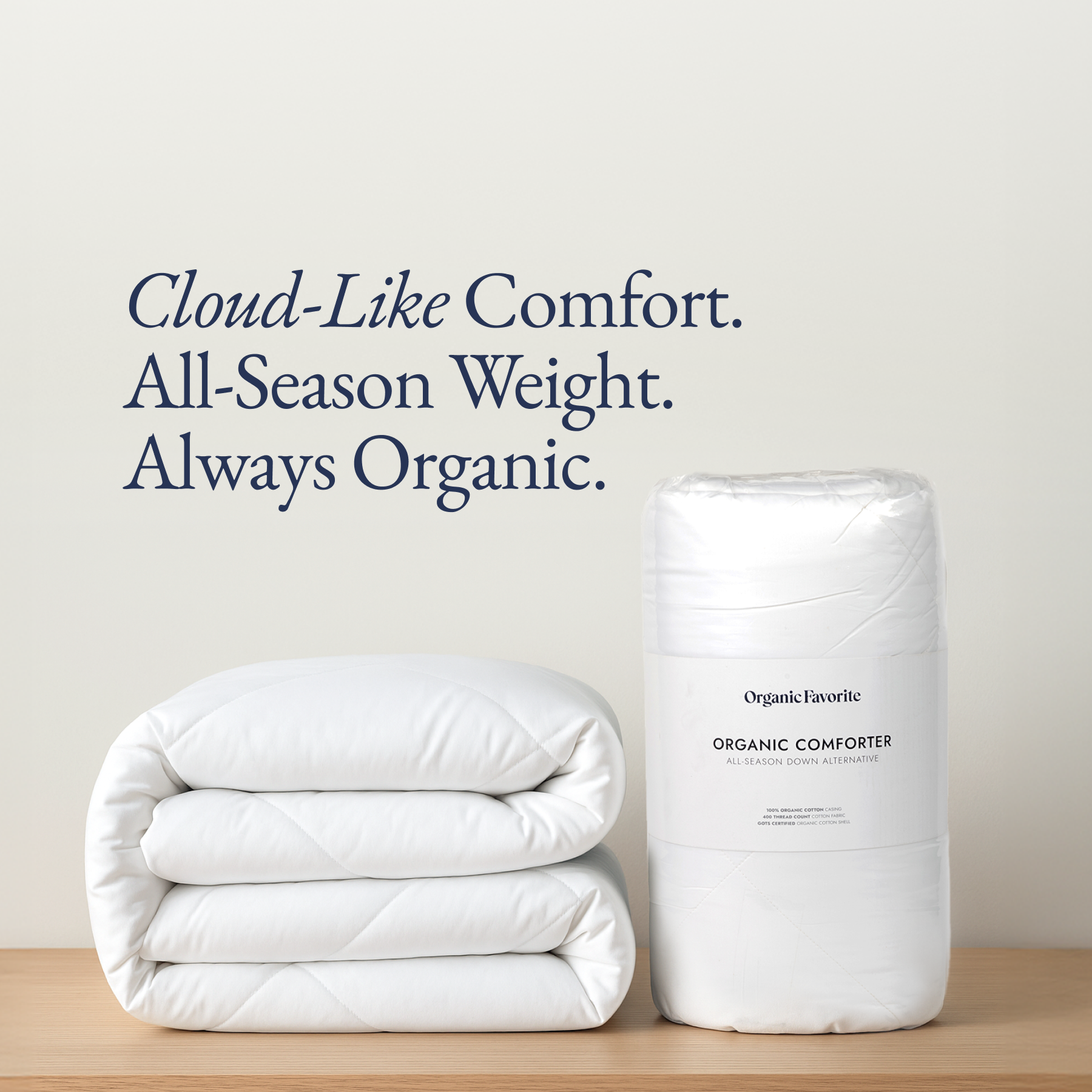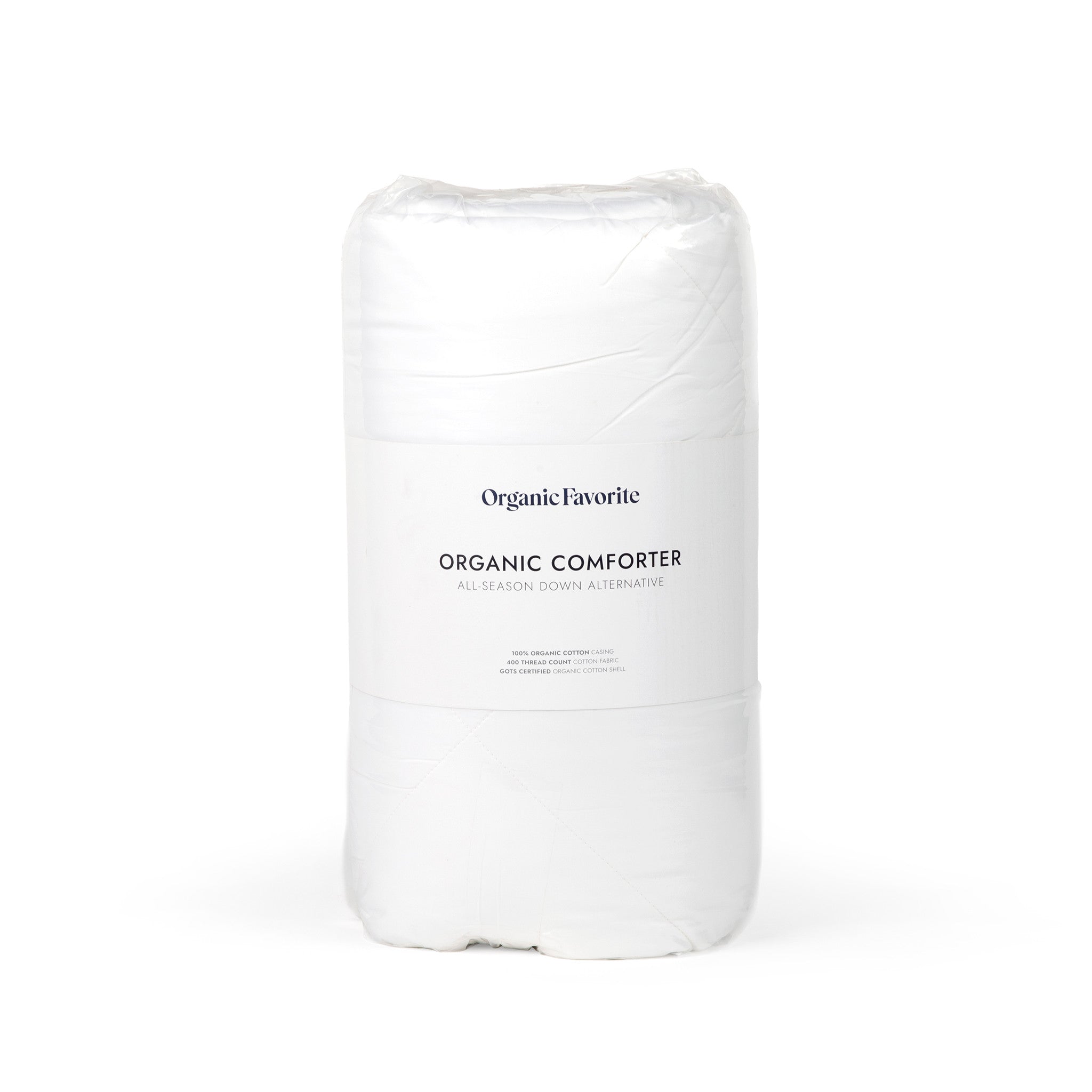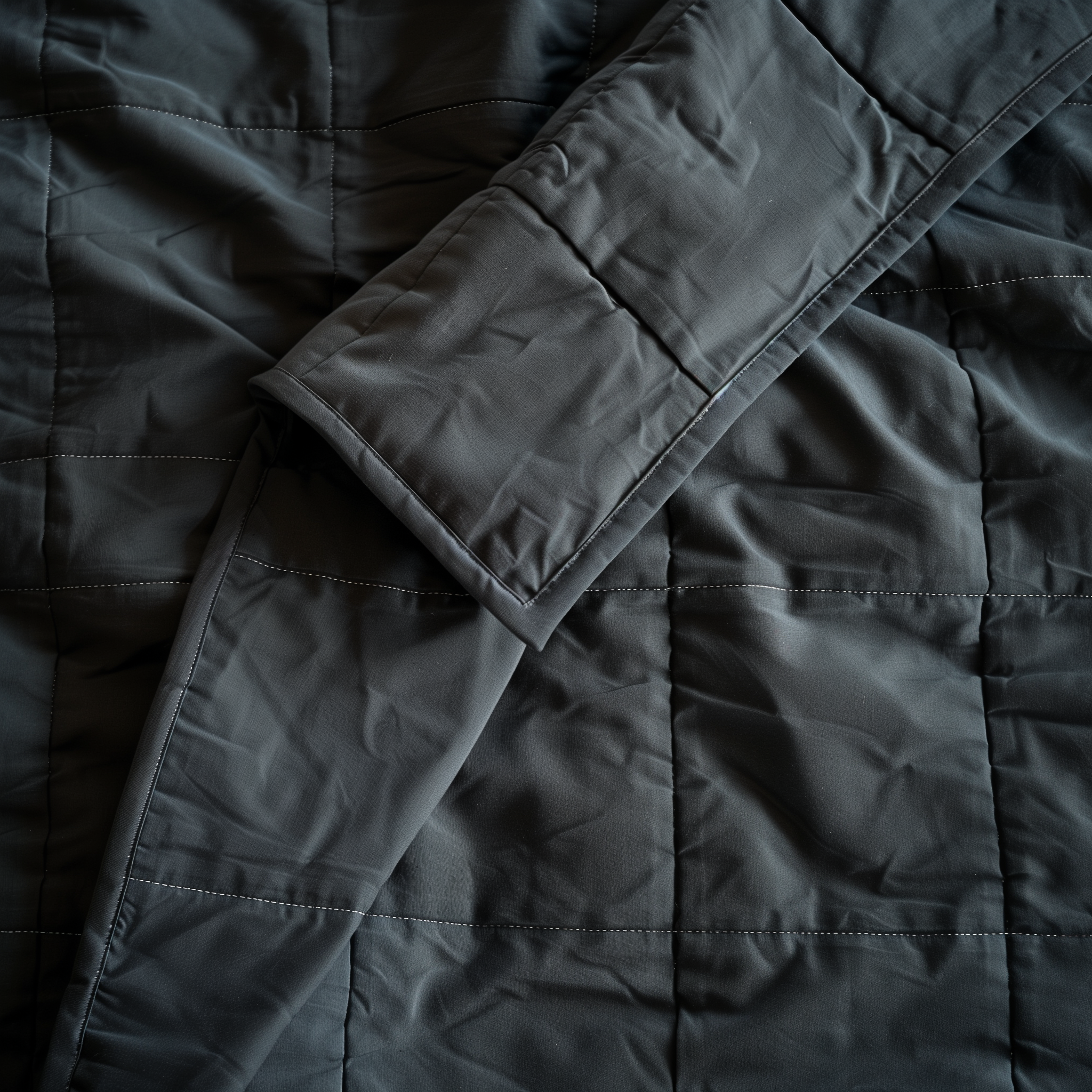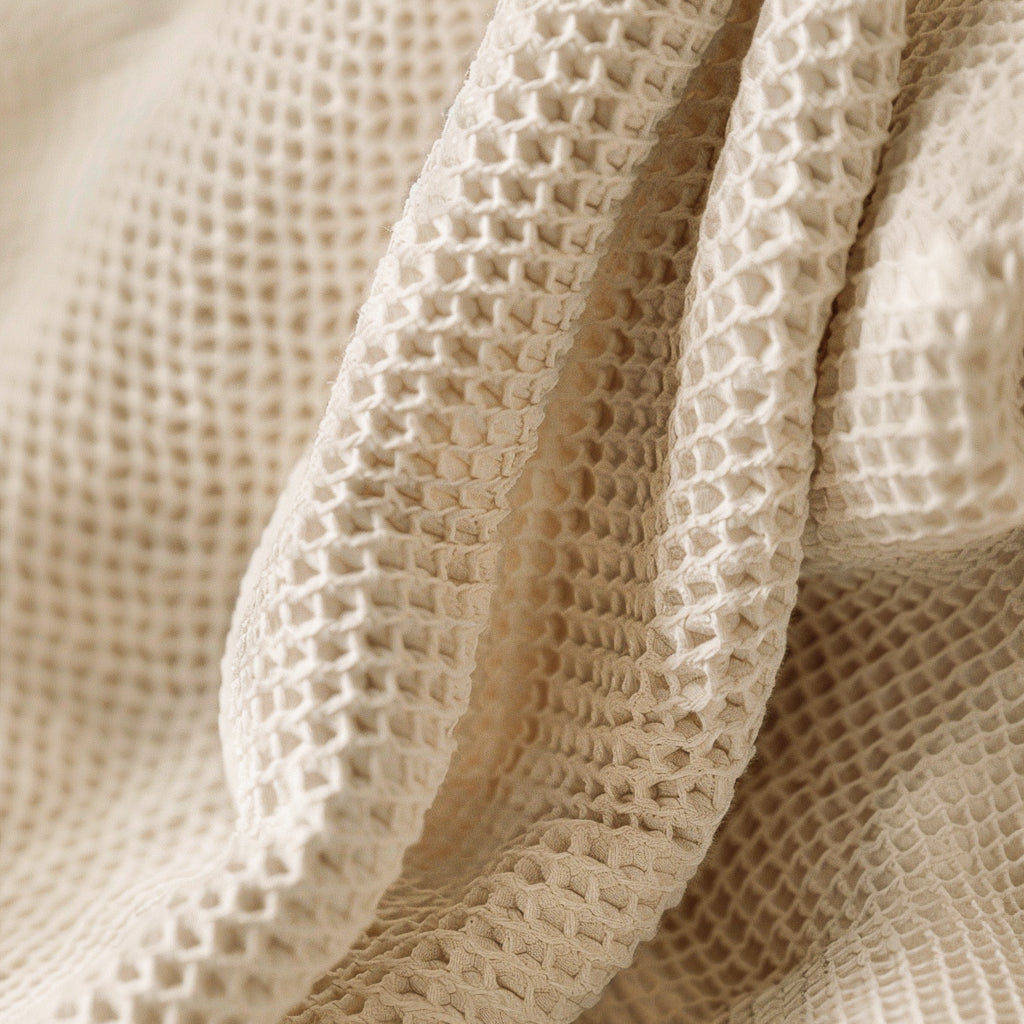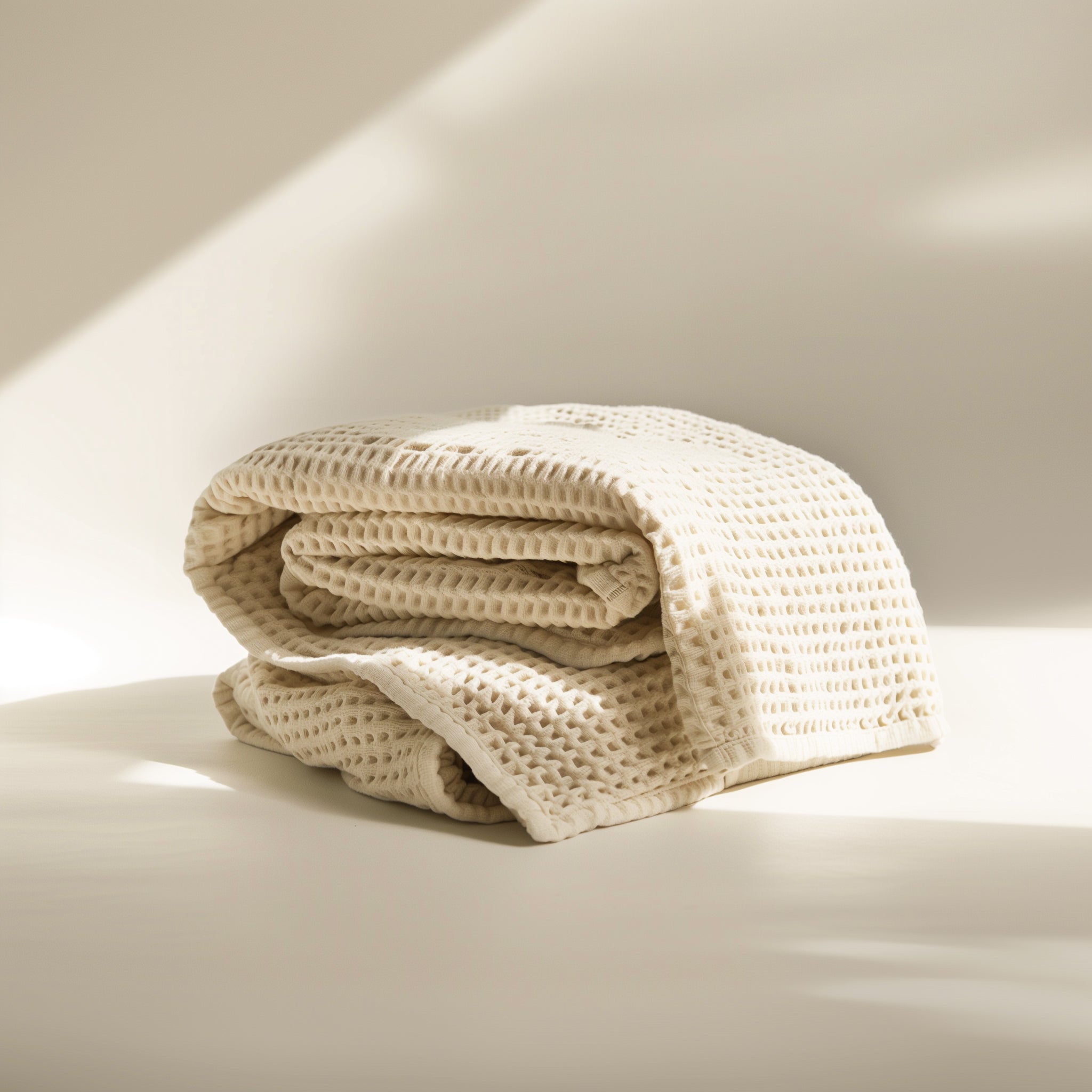Welcome to the world of organic cotton, where nature's wisdom meets modern sustainability.
As we collectively strive to embrace eco-friendly choices, one fabric stands out as a true champion: organic cotton. But what makes this material so special?
Its remarkable ability to biodegrade, returning to the earth in a gentle, natural cycle that nourishes the soil for new life.
The Incredible Natural Cycle of Organic Cotton
At its core, organic cotton is a pure, untreated marvel. Grown without the intervention of harmful synthetic pesticides or fertilizers, it retains its intrinsic composition—a blend of cellulose and natural plant compounds that microorganisms can easily break down. This all-natural makeup sets the stage for an incredible journey back to the earth.
As organic cotton products reach the end of their lifespan, they begin a fascinating transformation. When exposed to the right conditions, such as moisture, oxygen, and warmth, microscopic decomposers like bacteria and fungi spring into action. These industrious microbes feast on the cellulose fibers, gradually disassembling the cotton's molecular structure.
Through this meticulous process, organic cotton slowly biodegrades, layer by layer, until it becomes a rich, nutrient-dense soil amendment. The journey culminates in a nourishing, earthy embrace, where the remnants of the cotton join the intricate web of life, replenishing the soil and providing sustenance for new growth.
The Earth-Friendly Finish Line
Unlike synthetic fabrics that can linger in landfills for decades, organic cotton's biodegradable nature ensures a gentle, harmonious return to the planet. Cotton is completely biodegradable in 1 to 5 months. This remarkable timeline showcases the material's seamless integration into nature's cycles, completing a full circle from seed to soil.
By choosing organic cotton, you're not only investing in personal comfort but also supporting a closed-loop system that respects and sustains the environment. With each garment or textile, you're embracing a product that can ultimately give back to the earth, leaving a positive legacy for generations to come.
Factors That Influence Biodegradation: Uncovering the Secrets
While organic cotton's inherent biodegradability is a given, the rate and efficiency of the process can vary depending on several key factors. Understanding these elements can help you maximize the eco-friendly potential of your organic cotton products.
The Role of Microorganisms
Just as a symphony requires skilled musicians, the biodegradation of organic cotton depends on a diverse ensemble of microorganisms. Bacteria, fungi, and other microscopic decomposers work in harmony, each playing a vital role in breaking down the cotton fibers.
These tiny yet mighty organisms secrete enzymes that target and dismantle the cellulose chains, gradually transforming the cotton into smaller, more digestible compounds. Their collective efforts are essential in ensuring a complete and efficient biodegradation process.
Optimal Temperature, Moisture, and Oxygen Conditions
Like any living organism, the microbes responsible for biodegradation thrive under specific environmental conditions. Moderate temperatures, ranging from 20°C to 40°C (68°F to 104°F), provide the ideal climate for their metabolic activities.
Moisture is another critical factor, as these organisms require a certain level of humidity to function effectively. A balanced moisture level not only supports their growth but also facilitates the transport of essential nutrients and enzymes.
Lastly, the presence of oxygen is crucial. Aerobic conditions, where oxygen is readily available, allow for efficient biodegradation by enabling the microorganisms to respire and generate the energy required for their work.
By ensuring the right temperature, moisture, and oxygen levels, you can create an optimal environment for the biodegradation process to unfold smoothly.
The Absence of Synthetic Additives
One of the key advantages of organic cotton is its purity—free from synthetic additives and harsh chemicals. These artificial compounds can disrupt the natural biodegradation process, slowing it down or even preventing it altogether.
Conventional cotton, on the other hand, often contains residues of pesticides, fertilizers, and other synthetic treatments, which can inhibit the activity of decomposing microorganisms. This not only impedes biodegradation but can also introduce harmful substances into the soil.
By choosing organic cotton, you're ensuring a cleaner, more seamless transition back to nature. The absence of synthetic additives allows the material to biodegrade efficiently, without leaving behind any toxic remnants that could potentially harm the environment.

Soil Your Undies is a unique experiment, used by Australia's cotton farmers to test for soil health. Undies are buried in the soil, and then dug up around six weeks later. Natural fibers degrade quickly in quality soil.
The "Dirt" on Organic vs. Conventional Cotton
While all cotton originates from the same plant source, the cultivation methods employed in organic and conventional farming can have a profound impact on the fabric's biodegradability and environmental footprint.
Contrasting Biodegradability Timelines
When it comes to biodegradation, organic cotton outperforms its conventionally grown counterpart. As mentioned earlier, organic cotton can fully biodegrade within approximately 6 months under optimal conditions. This relatively rapid timeline is a testament to its pure, unadulterated composition.
In contrast, conventionally grown cotton may take significantly longer to biodegrade, or in some cases, may not biodegrade at all. The presence of synthetic pesticide residues and other chemical treatments can inhibit the activity of decomposing microorganisms, slowing down the process or even halting it entirely.
The Concerning Impact of Pesticide Residues
Beyond affecting biodegradability, pesticide residues found in conventional cotton can have far-reaching consequences for the environment. These toxic chemicals can leach into the soil and waterways, disrupting delicate ecosystems and potentially harming wildlife.
Moreover, as conventional cotton biodegrades, any residual pesticides or synthetic compounds may be released back into the soil, contaminating the very medium intended to support new growth.
The Potential Dangers of Synthetic Fiber Shedding
Another crucial consideration is the issue of synthetic fiber shedding. Many conventional cotton products contain synthetic blends or finishes, which can shed microplastic fibers during washing and wear.
These microscopic fibers can easily escape wastewater treatment systems and eventually make their way into oceans and other water bodies, posing a significant threat to marine life. Organic cotton, on the other hand, is free from synthetic additives, reducing the risk of microplastic pollution.
By choosing organic cotton, you're not only supporting a more biodegradable product but also actively minimizing the introduction of harmful substances into the environment.
Peeling Back the Truth on Synthetic Fabrics
While organic cotton's biodegradable nature is undeniable, it's essential to understand how it compares to synthetic fabrics, which have become increasingly prevalent in our wardrobes and homes.
Exposing the Harsh Reality
The unfortunate truth is that most synthetic fabrics, such as polyester, nylon, and acrylic, are non-biodegradable. These materials are derived from non-renewable fossil fuels and are designed to be durable and resistant to breakdown.
When synthetic fabrics end up in landfills or the environment, they can persist for hundreds of years, slowly breaking down into smaller and smaller fragments but never truly biodegrading. This accumulation of non-biodegradable materials contributes to the growing problem of plastic pollution, which poses a significant threat to ecosystems and wildlife.
Exploring Emerging Solutions
However, it's important to note that the textile industry is actively exploring solutions to address the issue of non-biodegradable synthetic fabrics. Researchers and manufacturers are developing innovative biodegradable polymers and fabric technologies that promise to break down more efficiently, reducing their environmental impact.
While these developments are promising, it's crucial to approach them with a discerning eye. Many synthetic alternatives still require specific conditions, such as industrial composting facilities, to biodegrade effectively. Additionally, the long-term environmental effects of these new materials are still being studied.
Understanding the Long-Term Impact
Beyond the immediate concerns of non-biodegradability, the proliferation of synthetic fabrics also raises questions about their long-term impact on the environment. As these materials gradually break down into smaller and smaller microplastic particles, they can end up in soil, waterways, and even the air we breathe.
The potential consequences of microplastic pollution on human health and ecosystems are still being investigated, but early research suggests they may contribute to various health issues and disrupt delicate ecological balances.
By choosing organic cotton, you're not only embracing a biodegradable material but also minimizing your contribution to the growing microplastic crisis. It's a small but significant step towards a cleaner, healthier future for our planet.
The Green Embrace: Organic Cotton's Sustainable Embrace
As we navigate the complex landscape of sustainable living, organic cotton emerges as a shining example of a renewable, biodegradable resource that aligns with our collective environmental aspirations.
Recognizing Organic Cotton as a Renewable, Biodegradable Resource
Unlike synthetic fabrics derived from non-renewable fossil fuels, organic cotton is a natural, plant-based material that can be grown and replenished year after year. Its ability to biodegrade seamlessly into nutrient-rich soil further solidifies its position as a truly sustainable choice.
By embracing organic cotton, we're not only minimizing our environmental impact but also supporting a closed-loop system that respects and nurtures the planet's cycles. Each organic cotton garment or textile represents a small but significant step towards a more sustainable future.
Celebrating the Eco-Conscious Benefits
Beyond its biodegradable nature, organic cotton offers a host of additional eco-conscious benefits. From reducing water consumption and minimizing greenhouse gas emissions to eliminating the use of harmful pesticides and synthetic fertilizers, the cultivation of organic cotton is a holistic endeavor that prioritizes environmental stewardship.
By choosing organic cotton, you're not only embracing a biodegradable material but also supporting a broader movement towards more sustainable and ethical practices in the textile industry.
Inspiring Readers to Join the Organic Cotton Movement
As consumers, we hold immense power in shaping the future of our planet. Every purchase decision we make is a vote for the kind of world we want to inhabit. By embracing organic cotton, we're casting our vote for a cleaner, healthier, and more sustainable future.
Many customers report a sense of empowerment and peace of mind when making the switch to organic cotton, knowing that their choices are actively contributing to a better tomorrow. So why not join the organic cotton movement today? Together, we can create a world where biodegradable, eco-friendly materials are the norm, and our collective commitment to sustainability becomes a way of life.
In conclusion, the biodegradable magic of organic cotton is a testament to nature's wisdom and a beacon of hope for a more sustainable future. By understanding its remarkable journey from seed to soil, and embracing the factors that influence its efficient biodegradation, we can make informed choices that align with our values and aspirations.
As we continue to explore the world of sustainable textiles, let us remember that every small step counts. By choosing organic cotton, we're not only investing in personal comfort but also contributing to a larger movement towards a healthier, more vibrant planet. So, let's embrace the biodegradable magic of organic cotton and pave the way for a greener, more harmonious tomorrow.


